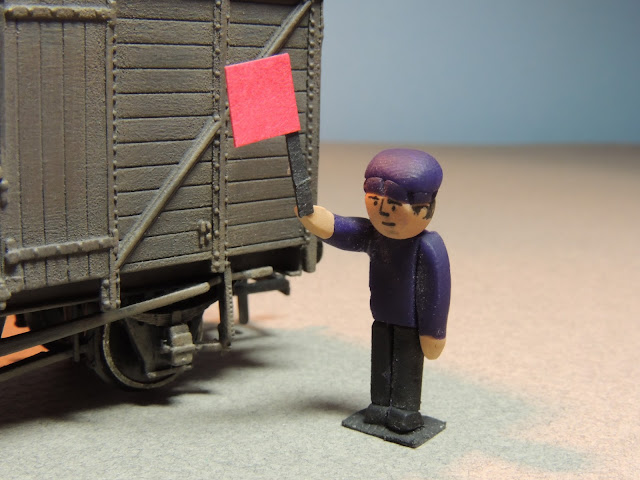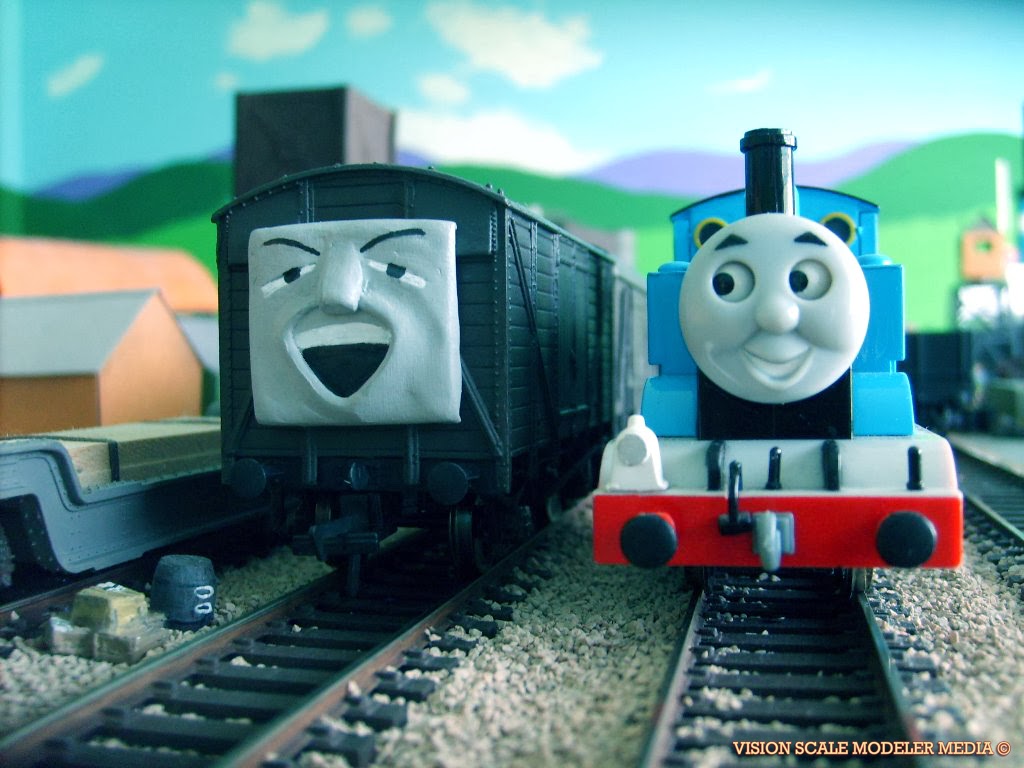I make figures this size for my Large Scale Skarloey engines
and for close-ups, such as cab or indoor scenes.

Here are both the HO/OO scale figure, and the Large scale, 16mm narrow gauge figure of the flagman for a comparison. These models are sculpted the same way as described in the previous post, though I find I have to add wire to the legs and head to make them stick together when baked. This also allows the head to rotate or turn as well, put separately together.
Here is Sir Topham Hatt in this size. I find I could add much more detail and expressions. I can have replaceable heads. You can see Sir Topham Hatt's different expressions on my homemade version of Something In the Air and Cranky Bugs!
Here are two farmers and a foreman. I could also place the legs together or farther apart.
Here is Jem Cole about to use the Telephone Box I made with card-stock, and clear plastic from an egg carton for the glass!
Here are the engine crew of Drivers and Firemen! I also found the heads look better with necks, the one on the far left being the best example.
Here is Skarloey, gleaming with the Railway Series color scheme, and his driver so you can see what he looks like leaning out from the cab. I can have both driver and firemen on board the footplate, and with the cab interiors fully modeled inside, I can film closeups with its detail and accuracy with the model, without having to make separate dioramas.
There is an insightful page on the Sodor Island Fansite Website, which is an interview with Alexandra Dawe. She is a model-maker from Seasons 6 - 10, who shares how the studio created the figures and props for 1 gauge and larger scales for closeups. I recommend reading these interviews for an inside look behind the scenes of Thomas and Friends, from the working experience and perspective of these extremely talented model-makers!
It is amazing to me how wonderfully these figures and engines come out, after years and years of making them, destroying them and salvaging parts to make better and more accurate versions. I believe I have come a long way, and I hope you can check this blog for more posts and pages, and comment on them too, so you can become inspired to make your own models.
Check out this page to see how I made Rheneas!



















































